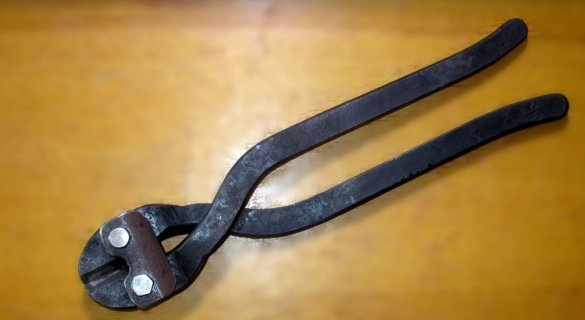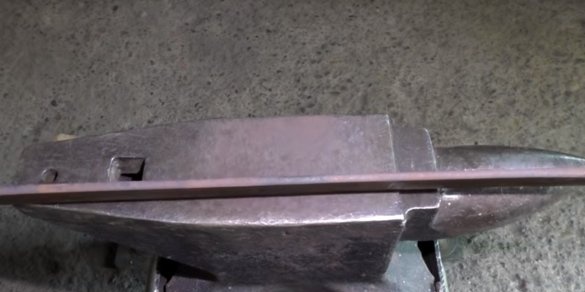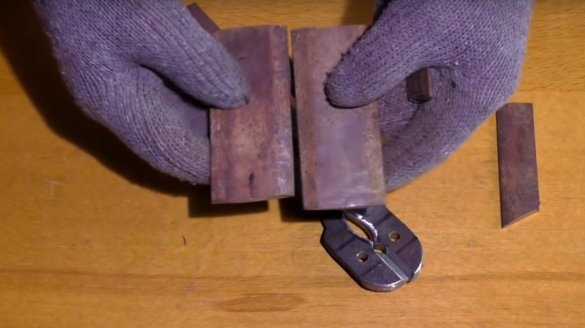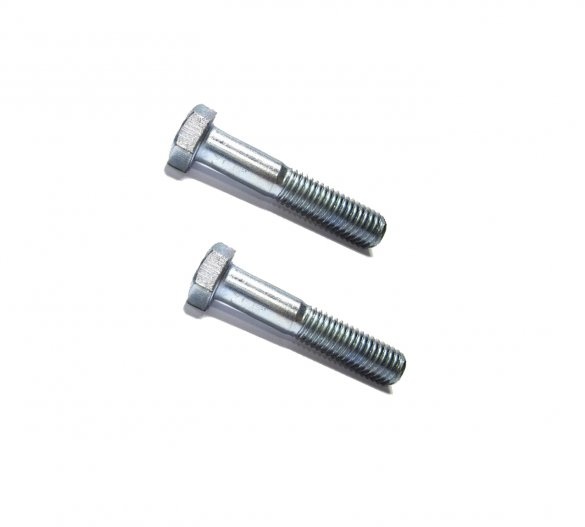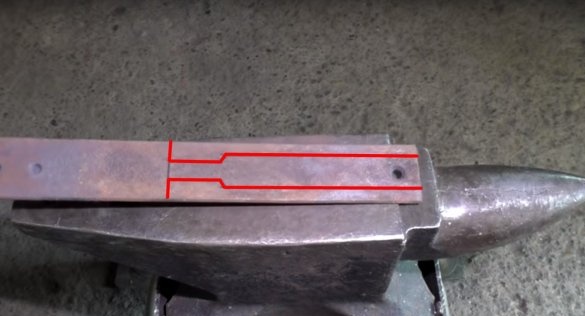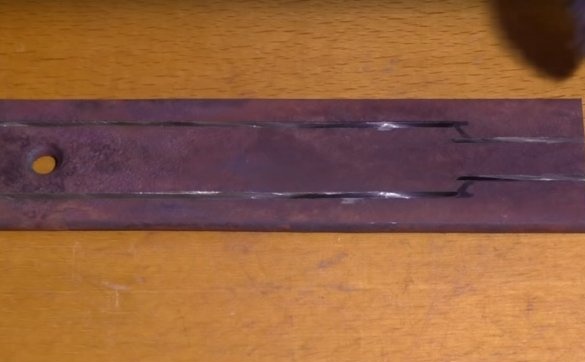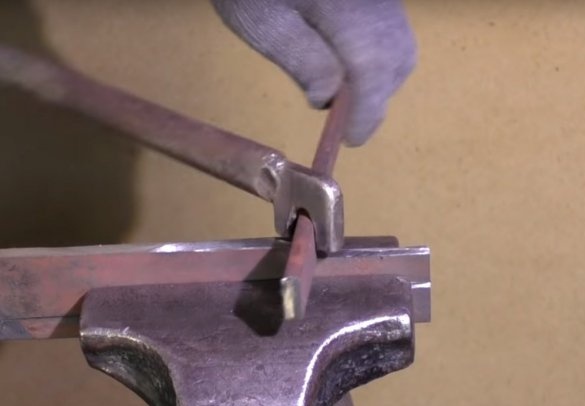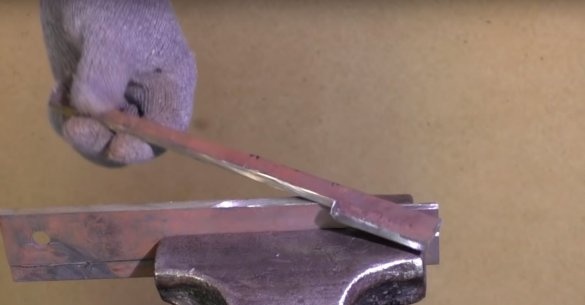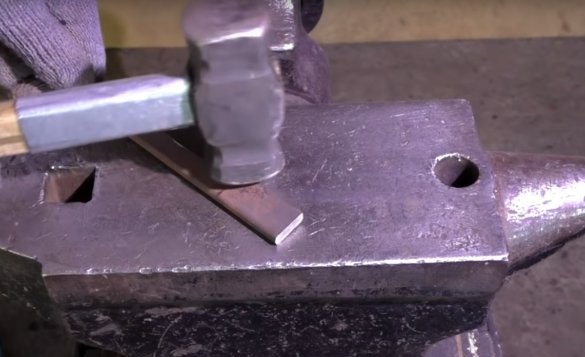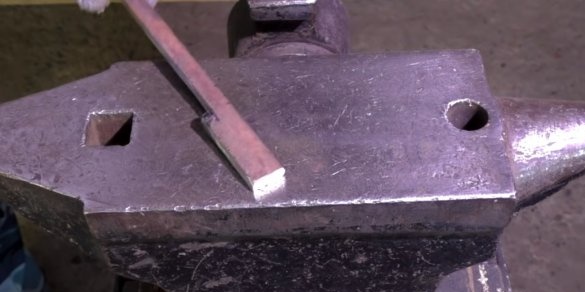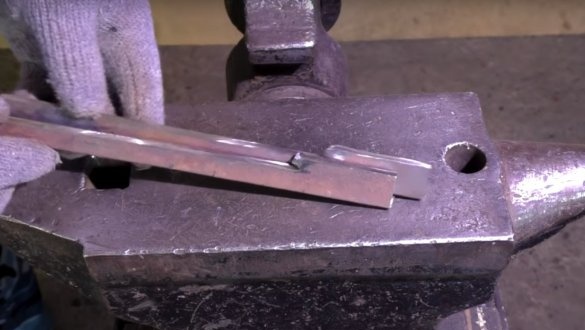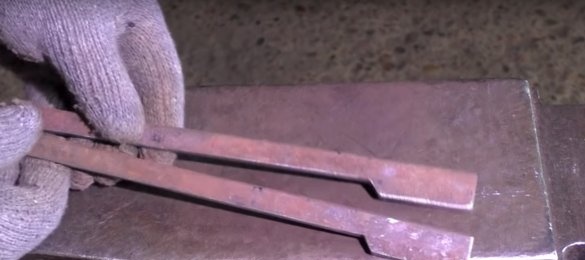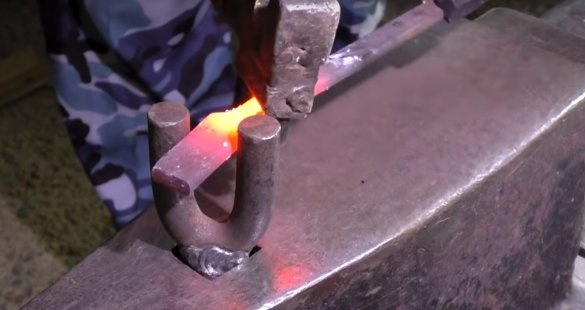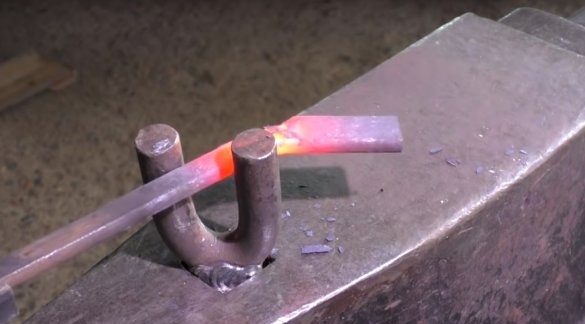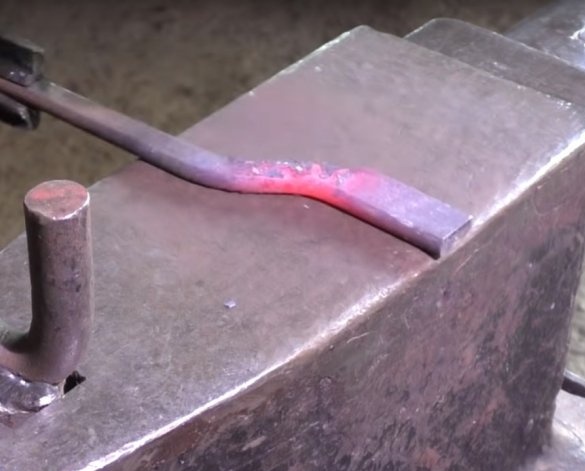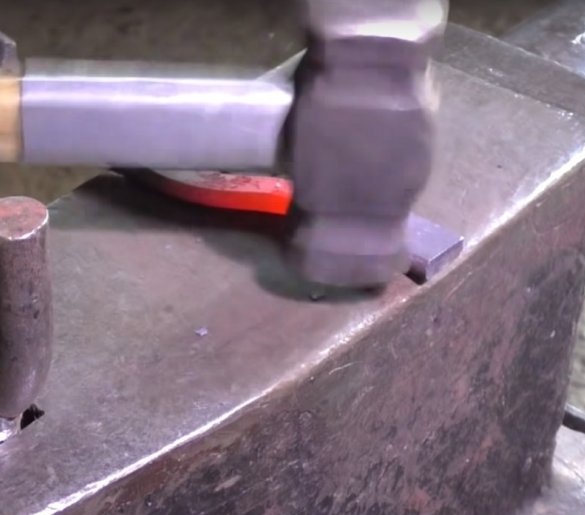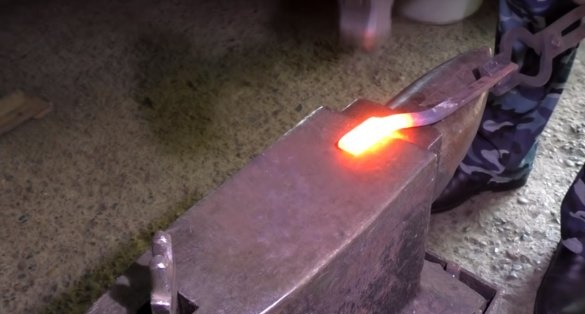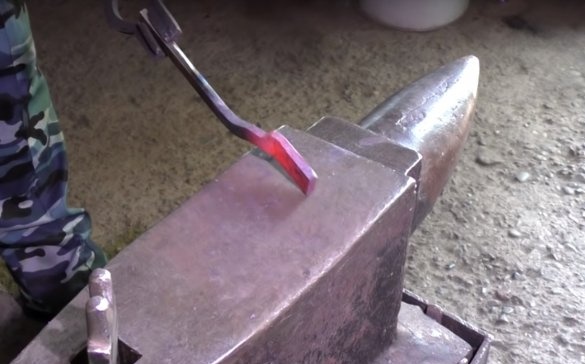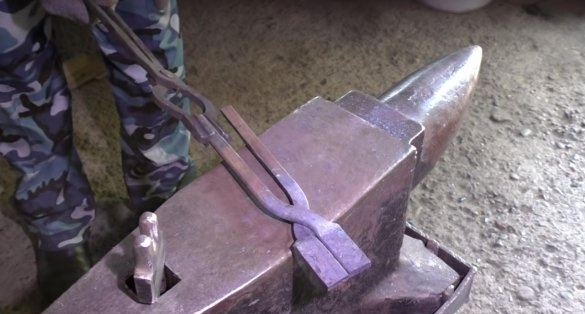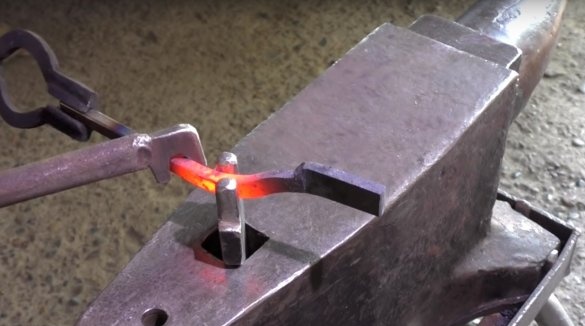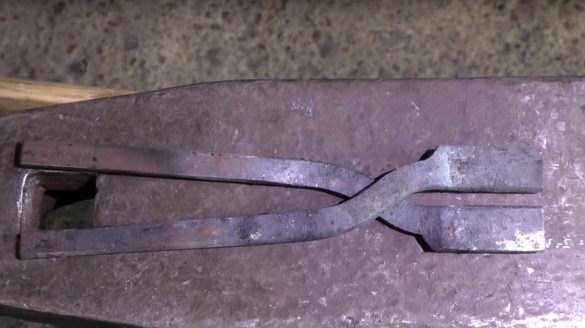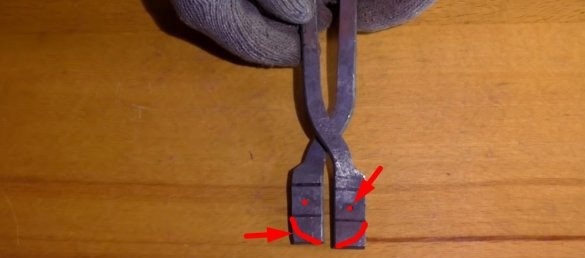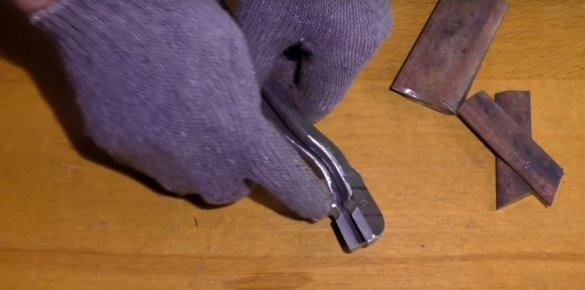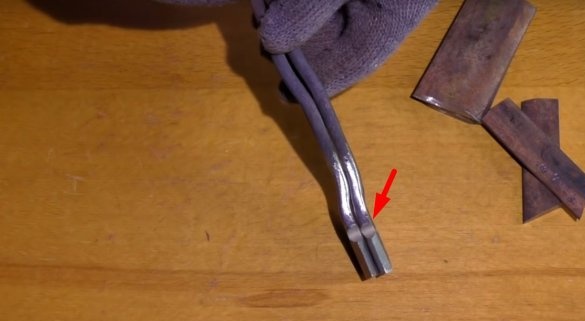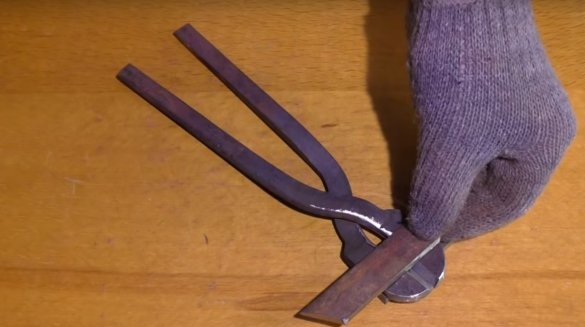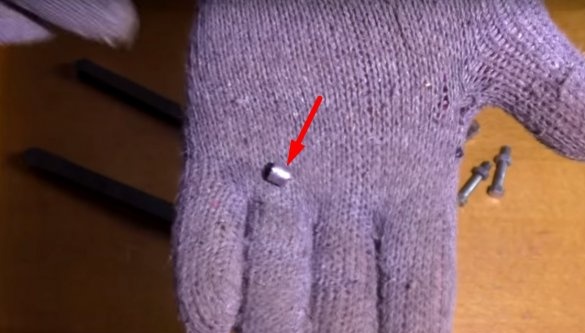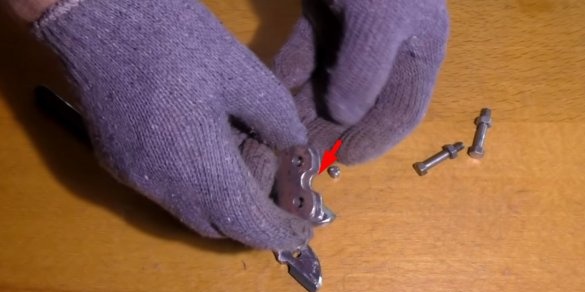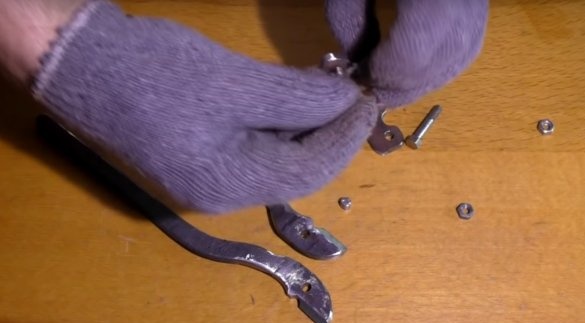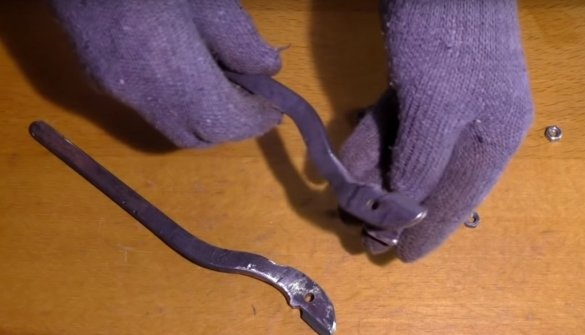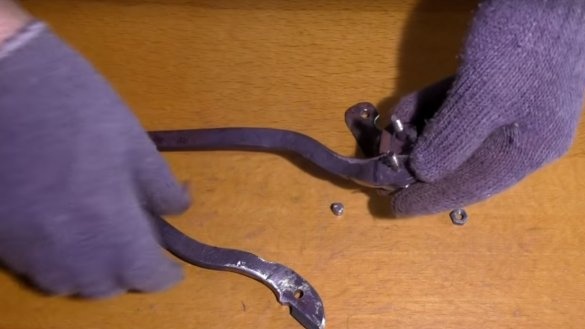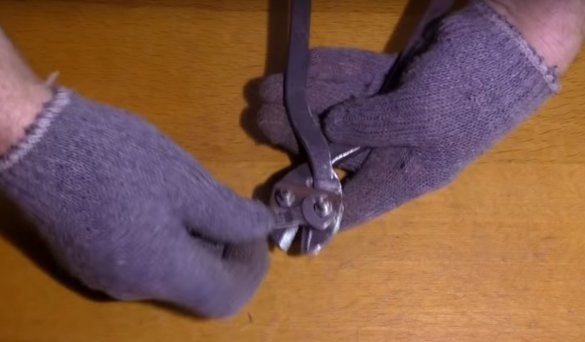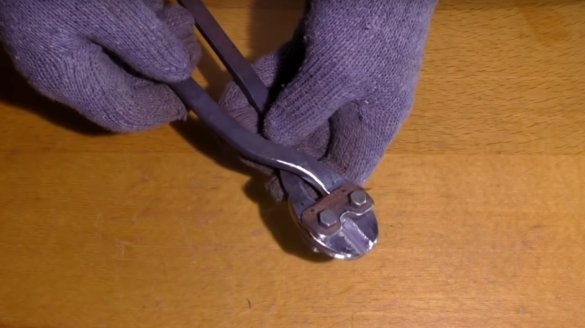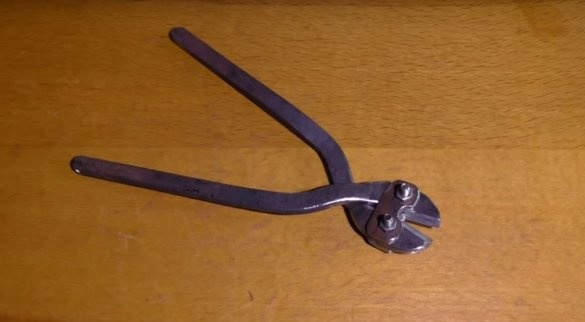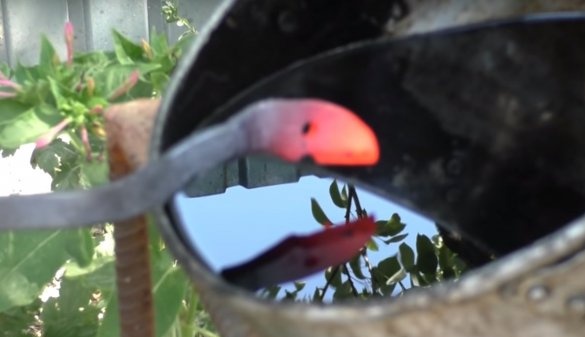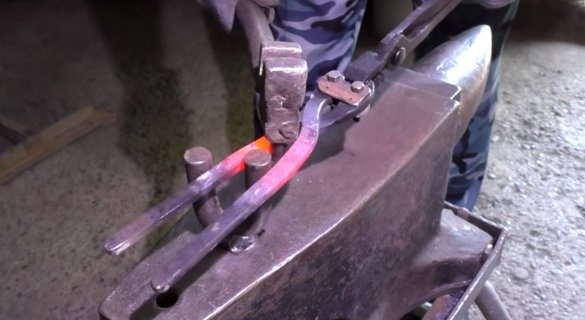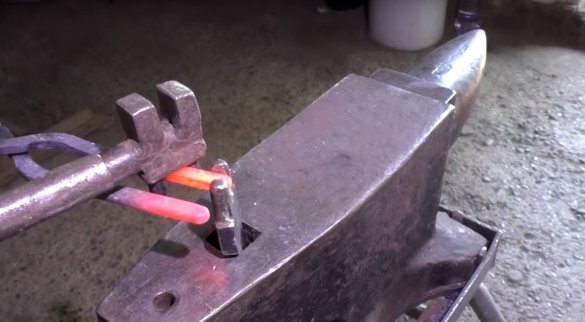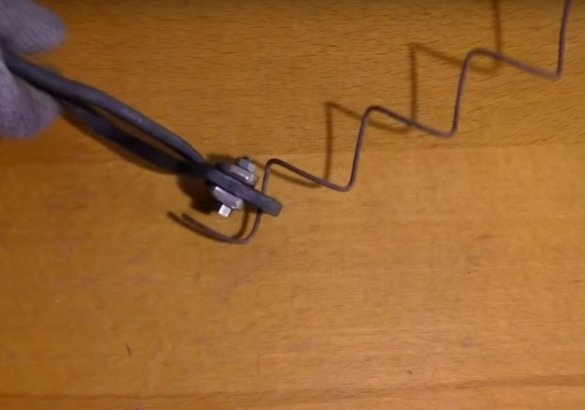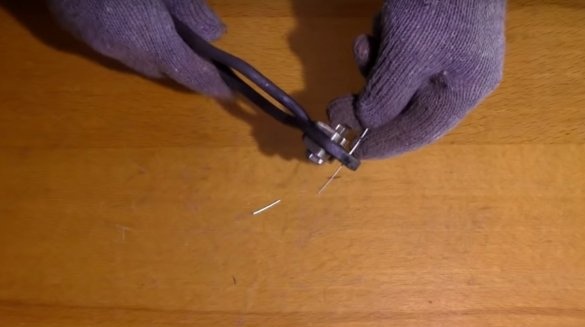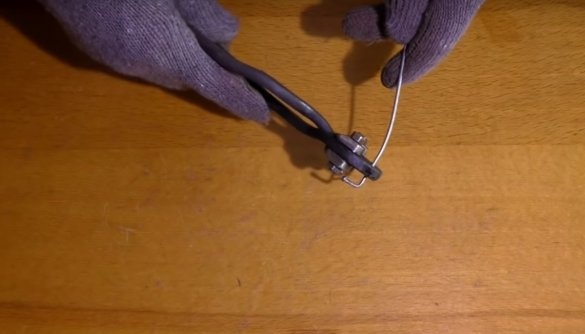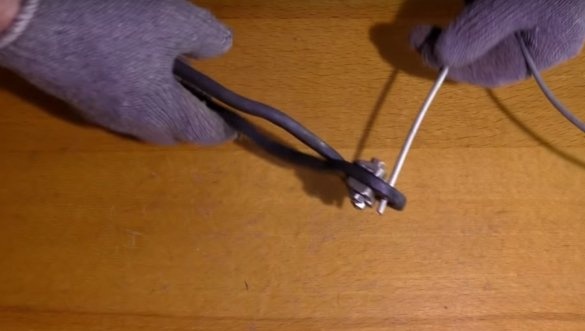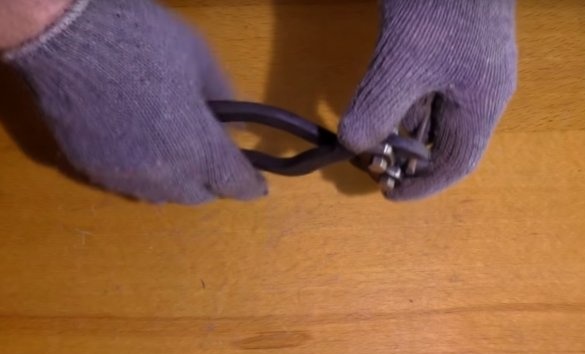Good day to all. In this article we will consider, I think one more useful for many homemade channel author. Many of you are already familiar with some homemade products of this master, such as, DIY forging or Homemade manual machine for cutting wire and rods. In this article, the author will clearly show how he collects such nippers from a spring leaf.
The author used the following materials:
Leaf spring, 8 mm thick.
A pair of pieces from 6 mm spring leaf.
The metal bar with a diameter of 8 mm.
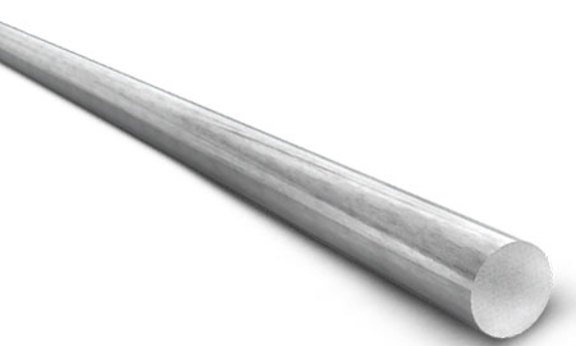
A pair of M 6 bolts.
And so are the nuts for these bolts.
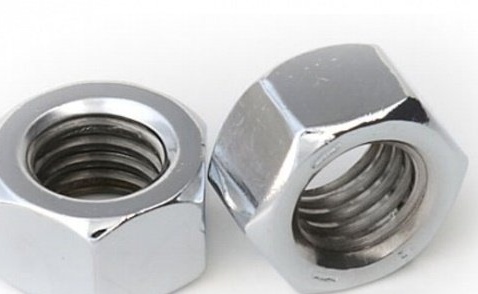
Instruments:
Blacksmith forks and pincers.
Angle grinder.
Hammer.
Electric drill.
Different files.
Vise.
Anvil.
And the drill.
On a large spring leaf, the author made the layout of the blanks.
After that, the master cut out these blanks using angle grinders.
And the places where to cut with the help of angle grinders were not given the opportunity, the author simply broke.
The dimensions of the workpieces: length 250 mm, thickness 8 mm, handle width 12.5 mm, jaw width 20 mm, jaw length 50 mm.
Such are the blanks.
The master smoothed off the broken edges of the workpieces with a hammer.
And then he processed it with a file.
Something like this.
Then alternately well heating each workpiece.
Gradually bent, giving each blank the desired shape.
He brought the bends so that when combining the parts of the handle and the sponge were on the same plane.
After trying on.
And again, the completion of the details.
Again fitting.
And so on until the combination of parts became almost ideal.
After that, in these places, the author will make holes for the bolts, and will give a rounded shape to the lips.
Next will sharpen the cutting edges.
And a round file on each of the sponges will make small grooves.
So that when combining parts, a hole with a diameter of 8 mm is obtained.
Further, from a spring leaf, which is smaller, the author first tried on.
And then a couple of such parts that will connect the first two blanks.
The author cut a small piece from a metal bar. This part will be installed in the semicircular cuts of the jaws, and thereby will prevent the longitudinal displacement of the jaws.
The groove in these details by the author was made for a reason. This is done so that in the process of work the workpiece is set closer to the axis, as many people know, there is the most optimal place for cutting workpieces.
Then the author made a preliminary assembly.
Having set all the details in their place.
Such a tool turned out at the master today.
After a little verification, the tool was disassembled again.
For hardening the cutting edge.
The author did quenching in oil.
Then the author corrected the shape of the instrument handles a little more.
For the convenience of working with this tool.
And as usual, the test on workpieces of different diameters.
The maximum thickness of the workpiece that can be cut with this tool is 5 mm.
And that's all for me. Thank you all and see you soon!

